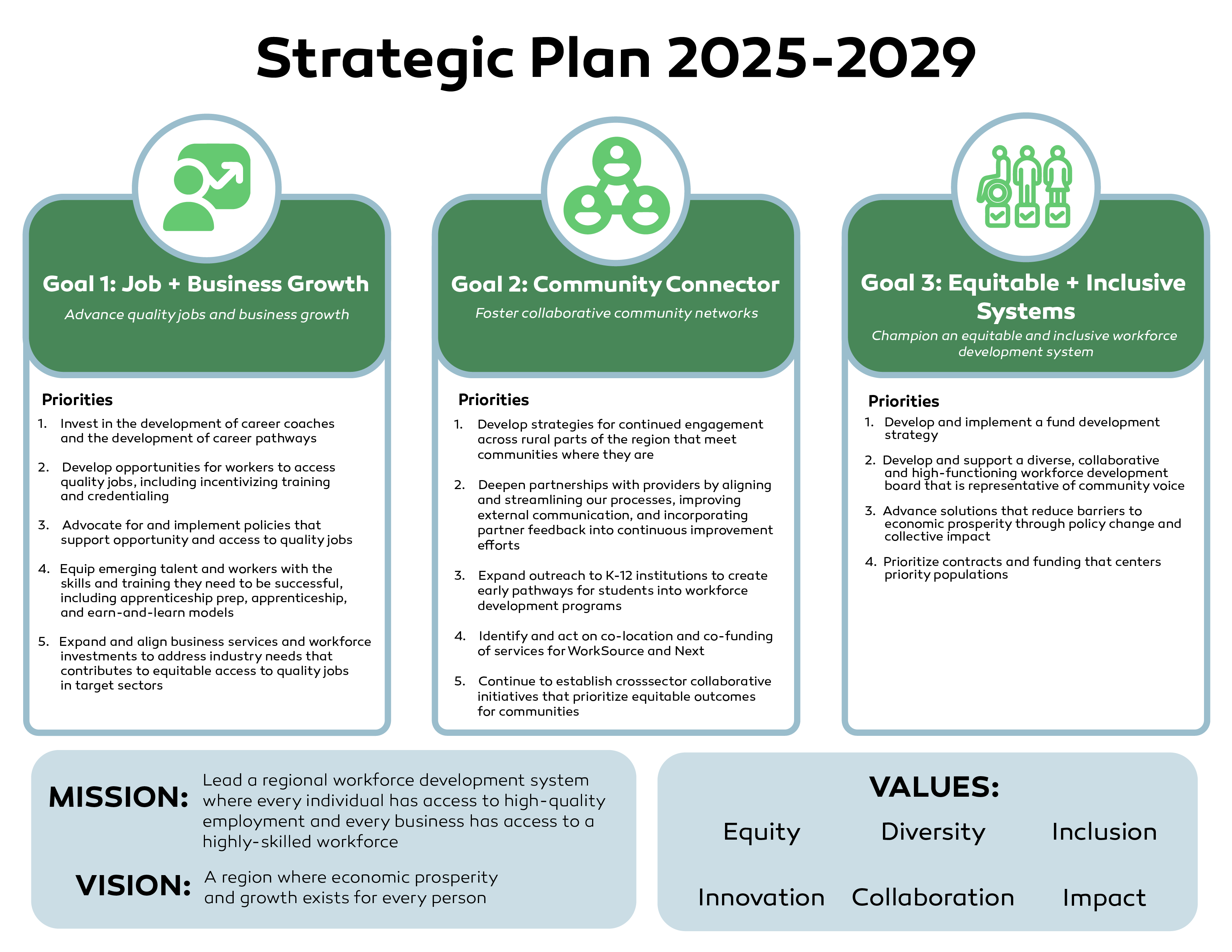Strategic Plan
Our strategic plan for 2025-2029 focuses on creating an equitable economy by supporting business growth, connecting communities and fostering economic mobility.
Created with input from business, education, staff, and community, the plan lays out three overarching goals and specific objectives WSW will work to accomplish in the next five years.
Click here to view and download WSW’s 2025-2029 Strategic Plan.
Values
- Equity: Promoting justice, impartiality and fairness within processes, and the distribution of resources by institutions or systems
- Diversity: Collectively interweaving differences and similarities that include, for example, individual and organizational characteristics, values, beliefs, experiences, background, preferences and behaviors
- Inclusion: Building a multicultural workforce climate where every community member can safely share their voice and be heard
- Innovation: Introducing new ideas, methods or products to make changes
- Collaboration: Working jointly with our customers, community and colleagues to achieve our shared goals
- Impact: Positively influencing and affecting our community



